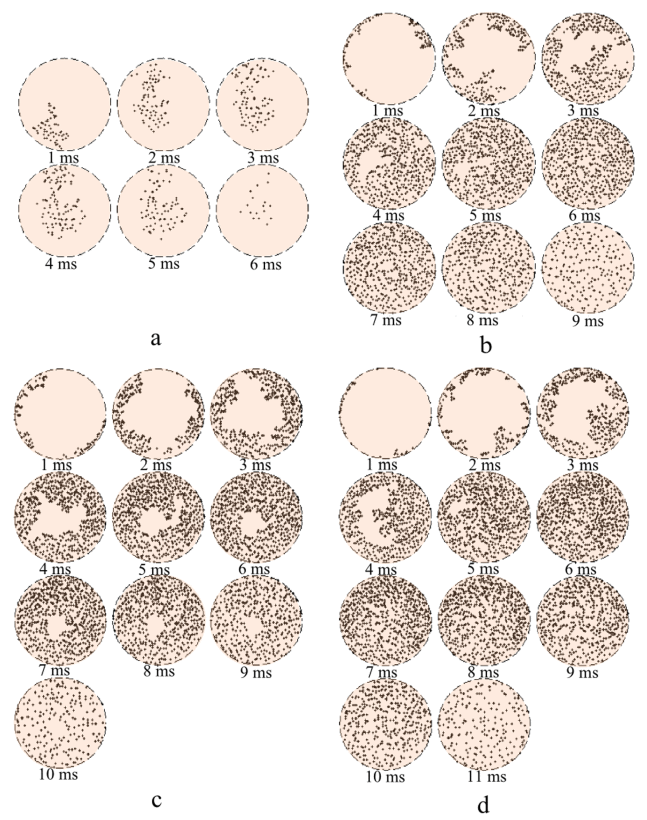Arc appearance and cathode spot distribution
in a long gap high-current vacuum arc controlled by an external axial magnetic field

Fig. 11 : CS distribution every millisecond during (a) Exp. 1 at 4.9 kA, (b) Exp. 4 at 26.7 kA, (c) Exp. 5 at 31.1 kA, and (d) Exp. 6 at 36.3 kA.
Abstract
An experimental study of a high-current vacuum arc (VA) generated between two static CuCr25 contacts spaced 20 or 30 mm apart was conducted to characterize the arc appearance and the cathode spot (CS) distribution. The arc was ignited from the lateral surface of the cathode and controlled using an external axial magnetic field. Under the investigated experimental conditions, three distinct arc modes have been observed: multiple arc, diffuse and diffuse columnar modes. The latter appeared at low BAMF/Iarc values, typically below 4 mT/kA. The temporal evolutions of the spot spatial distribution and of the associated distribution of the current density were analyzed by processing high-speed video images of the cathode. Various types of distribution depending mainly on current were identified. At low currents (up to 13 kA), CSs distribution covered only a fraction of the cathode surface. At intermediate currents (in 17.2 – 31.1 kA range), CSs were present on the whole circumference of the cathode and the CS distribution included a closed region without spot. The latter was progressively filled by CSs, yet it totally disappeared before the end of arcing only when its location was off-centered with respect to the cathode axis. At high currents (up to 36.3 kA), the whole cathode surface was occupied by CSs at current peak. The azimuthally averaged radial distribution of the current density was found to be relatively uniform in the regions occupied by CSs. An average spot current of 36.5A ± 2.5 A has been estimated.
Benoît Tezenas du Montcel, Pierre Chapelle, Alain Jardy, Christophe Creusot
Published in: IEEE Transactions on Plasma Science ( Volume: 46 , Issue: 10 , Oct. 2018 ) – Page(s): 3722 – 3730


